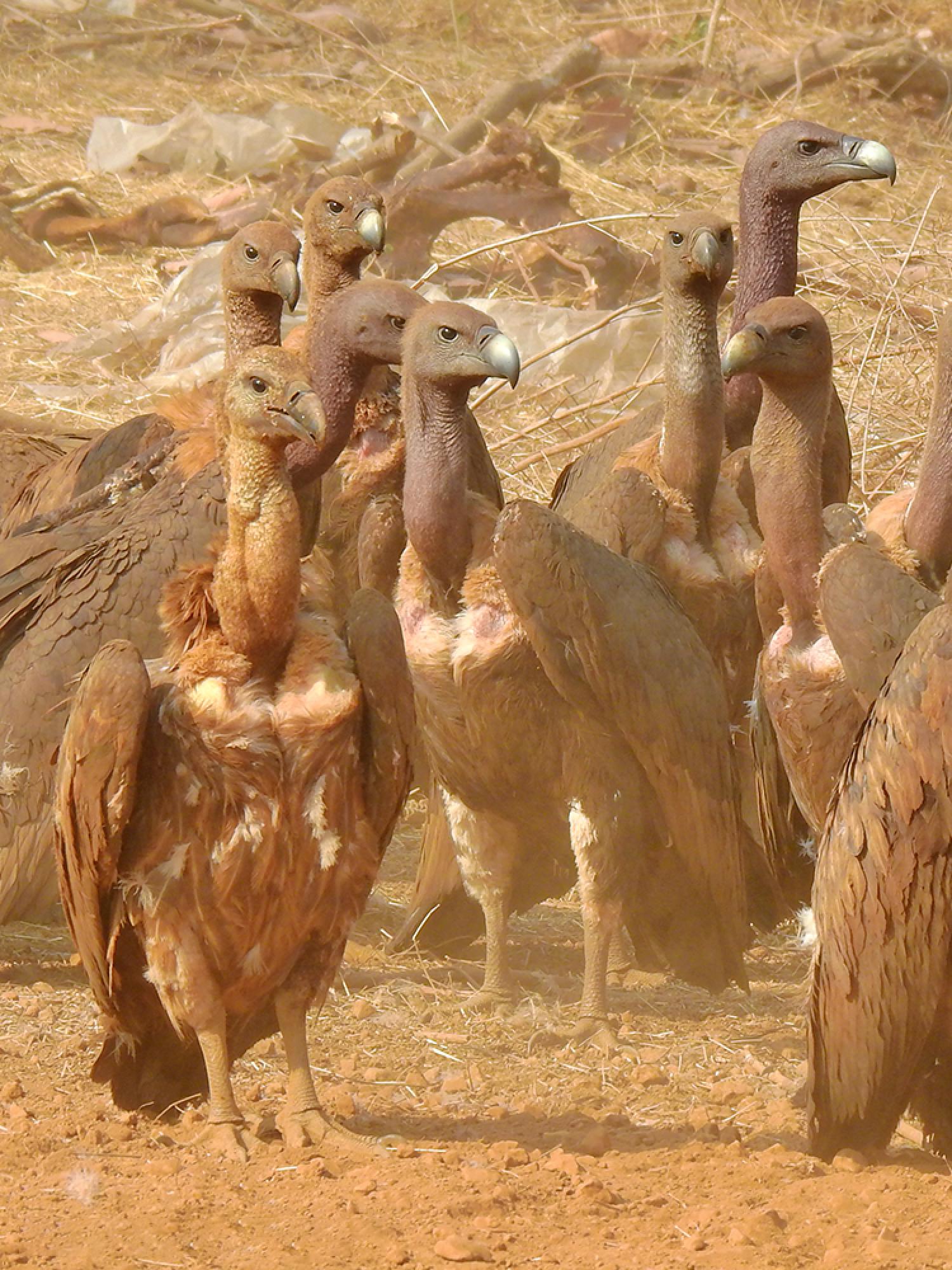
This toxicity is caused by higher levels of lead, cadmium, zinc, and copper. Researches have seen that there has been a rise in toxicity in the liver, kidneys, pectoral region, and internal organs. More recent studies have indicated a new plausible factor in the current declination of the vultures. Habitats are also being disturbed by human land management and direct nesting persecution patterns. This poisoning generally occurs outside of protected areas but is a leading factor in the population's decline. Vultures ingest the poison upon eating a deceased animal's carcass. In order to kill hyenas, lions, and other predators, herders add poisons into their livestock. Vultures are also being poisoned by humans, although not intentionally. In Kenya especially, humans are using a toxic pesticide called Furadan, which has led to many vulture deaths.

Power lines have caused many vultures to be electrocuted.

Fires have also caused the destruction of trees used for nesting habitat. A major cause of population decrease is the loss of habitat and anthropogenic disturbance. The loss of adults will cause less reproduction and with younger birds less likely to survive, the population will drop drastically. This means that the deaths of adult vultures will lead to rapid population declines. Across all ages, the survival rate is estimated to be 90.7%. Individual adults have the highest survival rate, while 2 year old birds have the lowest survival rate. While not much is known about the current population, a recent study found that white-backed vultures have a high survival rate. Over the past two decades, its population has noticeably decreased. In 1922, the population was estimated at 270,000. The population size of the white-backed vulture has been decreasing significantly within the past few decades. In October 2015, its status was changed to Critically Endangered because the ongoing decline is more severe than previously thought. In 2012, it was further uplisted to Endangered. It was reassessed from a Least Concern to Near Threatened species in the 2007 IUCN Red List. The white-backed vulture, like many African vultures, has suffered a rapid decline. It is the most widespread and common vulture in Africa with an estimated range of 24,300,000 km 2 (9,400,000 sq mi), but has undergone rapid population declines in recent years.

The white-backed vulture occurs from Senegal, Gambia and Mali in the west, throughout the Sahel region to Ethiopia and Somalia in the east, through East Africa into Mozambique, Zimbabwe, Botswana, Namibia and South Africa in the south.

It breeds in trees on the savannah of west and eastern and southern Africa, laying one egg. It also takes scraps from human habitations. Like other vultures it is a scavenger, feeding mostly from carcasses of animals which it finds by soaring over the savannah. This is a medium-sized vulture its body mass is 4.2 to 7.2 kilograms (9.3–15.9 lb), it is 78 to 98 cm (31 to 39 in) long and has a 1.96 to 2.25 m (6 to 7 ft) wingspan. The adult's whitish back contrasts with the otherwise dark plumage. The white-backed vulture is a typical vulture, with only down feathers on the head and neck, very broad wings and short tail feathers. Preening at the Kgalagadi Transfrontier Park


 0 kommentar(er)
0 kommentar(er)
